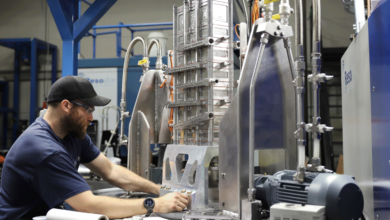Why Do Retail Environments Require Specialized Electrical Planning?

Retail spaces are dynamic, high-traffic environments that rely heavily on electrical systems to support lighting, displays, security, climate control, and digital technologies. Unlike generic commercial buildings, retail environments must create engaging, functional, and flexible spaces that support both customer experience and operational efficiency. To achieve this, retail businesses need specialized electrical planning that addresses their unique requirements.
Partnering with experienced commercial electricians is essential for creating a well-designed and future-ready retail electrical infrastructure. These professionals understand the specific challenges retail businesses face and provide tailored solutions that enhance performance, safety, and adaptability.
The Customer Experience Depends on Lighting and Power
In retail, lighting isn’t just about visibility—it’s about creating atmosphere and guiding customer behavior. Strategic lighting can highlight products, encourage browsing, and make the store more inviting. Every area, from window displays to fitting rooms, requires thoughtful lighting design and reliable power.
Commercial electricians work closely with retail designers and managers to ensure that lighting systems are flexible and effective. They know how to implement layered lighting strategies—combining ambient, task, and accent lighting—to improve both function and aesthetics. This not only attracts customers but also increases the chances of sales.
In addition to lighting, retail spaces must power electronic displays, digital signage, music systems, and point-of-sale (POS) terminals. All of these components need dependable electrical access and smart placement to avoid tangled wires or visual clutter.
Electrical Load Management and System Efficiency
Retail environments often have fluctuating electrical demands. Seasonal lighting, added point-of-sale systems during peak periods, and special events can put extra strain on the electrical system. If the infrastructure isn’t properly planned, it can result in overloaded circuits, tripped breakers, or equipment damage.
Commercial electricians address these challenges by designing systems that can handle variable loads without sacrificing efficiency. They calculate peak energy usage and plan circuits accordingly, ensuring that lighting, HVAC, refrigeration, and electronics all have stable and sufficient power. This reduces operational disruptions and helps retailers avoid costly electrical failures.
Safety Standards and Code Compliance
Safety is a top concern in any commercial setting, but it becomes especially critical in retail environments where customers are constantly interacting with the space. Poorly installed electrical systems pose fire risks, trip hazards, and shock dangers.
Commercial electricians ensure that all electrical work complies with national and local safety codes. From emergency lighting and fire alarm systems to GFCI outlets and wiring insulation, they incorporate safety into every aspect of the electrical plan. This protects customers and staff while also shielding the business from liability and potential legal issues.
Furthermore, proper planning helps ensure that retail spaces are ready for regular safety inspections. Non-compliance can lead to fines or forced closures, disrupting business operations and damaging brand reputation.
Supporting Modern Retail Technology
Today’s retail environments are becoming increasingly tech-driven. From touchscreen kiosks and automated checkout to digital inventory tracking and security systems, modern technology requires robust and well-distributed electrical infrastructure.
Commercial electricians play a critical role in supporting these systems by installing high-capacity circuits, data cabling, and smart power management tools. Their planning ensures that technologies can be integrated smoothly without overloading existing systems. As retail trends evolve, the need for electrical systems that can support emerging tech—like augmented reality displays or energy management systems—becomes even more important.
Flexibility for Store Layout Changes
Retail businesses frequently update their layouts to reflect seasonal promotions, product launches, or evolving customer preferences. Without a flexible electrical system in place, these changes can become expensive and time-consuming.
To solve this, commercial electricians design modular systems with future changes in mind. They install accessible wiring paths, movable lighting fixtures, and extra outlets in key areas, allowing store managers to rearrange layouts without significant rewiring or additional construction. This adaptability saves money and keeps the store visually and functionally current.
Energy Efficiency and Cost Management
Energy costs are a significant expense for retail operations. Inefficient lighting, outdated HVAC systems, and unnecessary power usage all drive up utility bills. Specialized electrical planning helps minimize these costs.
Commercial electricians recommend energy-efficient solutions such as LED lighting, smart thermostats, and occupancy sensors. They also help business owners take advantage of energy-saving technologies like automated lighting controls and demand-based power management systems. These systems reduce energy waste and can lead to substantial savings over time.
See Also: Techoelitecom: Exploring the Tech Elite
Conclusion
Retail environments are unlike any other commercial spaces. They require electrical systems that not only power equipment but also enhance the shopping experience, support complex technology, and adapt to ongoing changes. Specialized electrical planning is essential to meet these demands, and commercial electricians are the key professionals who make it possible. Their expertise ensures that retail spaces are efficient, safe, and ready to support both current operations and future growth. With the right planning and skilled execution, a retail business can create an environment that is both inviting to customers and cost-effective to run.




